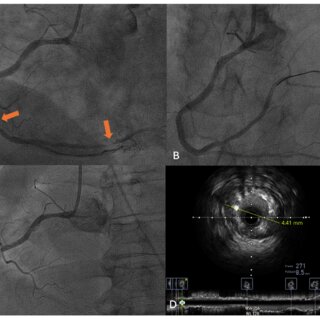Interventional radiology is a medical subspecialty that uses image guidance for minimally invasive procedures. When physicians evaluate and manage heart failure pathways, IR provides specific diagnostic and therapeutic options. These targeted procedures address conditions related to heart failure and its symptoms. Here is more information about new treatment options for heart failure:
Angioplasty Procedures
Angioplasty is a procedure to open narrowed or blocked blood vessels. An interventional radiologist guides a small balloon-tipped catheter to the site of the blockage, and then the balloon is inflated. While the balloon compresses the plaque against the artery wall, it widens the vessel to restore blood flow. Surgeons sometimes place stents inside the body to keep the vessel open.
Devices and Shunts
Interventional radiologists place and manage various medical devices. They use imaging to guide catheters and wires through blood vessels, so they can deploy devices in precise locations. This technique is used for creating shunts or placing other hardware. A shunt is a passage that allows fluid to move from one part of the body to another.
Surgeons typically perform these procedures through small incisions using minimally invasive techniques. The radiologist may monitor the device placement in real-time using fluoroscopy or other imaging methods. Careful positioning is part of the technical success of the procedure, and it must be done by a trained surgeon.
For certain heart failure-related conditions, shunts may be created to redirect blood flow. This process changes pressure and volume dynamics, and it does this within the circulatory system. The specific type of shunt or device depends on the patient’s individual anatomy and clinical situation. These procedures may lead to shorter recovery times and reduced risks compared to traditional surgical approaches.
Activation Therapy
Activation therapy involves the stimulation of specific nerves, and it targets small areas. Interventional radiologists may be involved in the placement of devices for these therapies, which they perform using image guidance. The device sends mild electrical pulses to nerves that regulate cardiovascular function. This approach is a component of managing symptoms in select patient populations.
Pain Medications
Some interventional radiology procedures address pain management. These are typically performed on an outpatient basis and don’t require an overnight hospital visit. Because these treatments are targeted, they limit systemic exposure to medications. Pain-related interventions include:
- Nerve blocks
- Injections
- Radiofrequency ablation
Radiofrequency ablation uses heat to disrupt nerve signals, while targeted injections deliver pain medication directly to a specific source. Both procedures use image guidance for precision. These interventions may be used for pain stemming from conditions associated with heart failure. These minimally invasive techniques can provide significant pain relief and improve the quality of life for patients when used as part of a comprehensive treatment plan.
Schedule Interventional Radiology Procedures
Managing heart failure is a complex process that requires collaboration among various medical specialists to address its multiple aspects. Interventional radiology contributes by providing minimally invasive procedures for related conditions and symptoms. Your referring physician may choose to coordinate with specialists if you are a candidate for these procedures. Contact a radiologist to schedule your procedure and treat heart failure.










